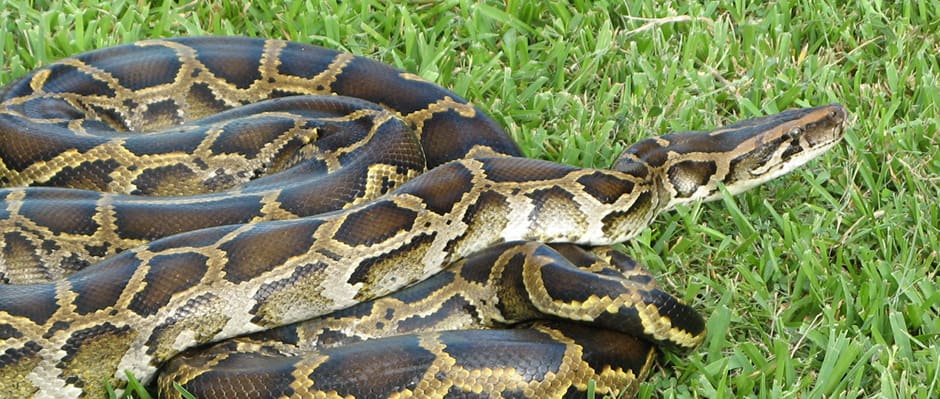Share this article
Telemetry Reveals Habits of Invasive Pythons in Florida
While one the largest invasive snakes in the world has wreaked havoc on the Everglades ecosystem for several years, very little is known about their movement habits.
But a new United States Geological Survey study has found that individual Burmese pythons (Python bivittatus) in Florida’s Everglades National Park have an average home range of 22.5 square kilometers, though the habits of individual snakes can vary greatly.
“A lot of it is the baseline study of what we know about these animals,” said Kristen Hart, a USGS research ecologist, TWS member and lead author of a work published recently in Animal Biotelemetry. “It’s really an important study to have out because now we know what kind of area they cover.”
As part of the study, researchers tracked Burmese pythons for several years after implanting the snakes — ranging anywhere from roughly eight to 17 feet long — with radio tags. The team found that the snakes tend to move around more during dry spells or in drier areas and, among other things, pythons tend to enjoy spending time on tree islands in the Everglades ecosystem. They also noted that the pythons appeared to have some tolerance for salty, brackish water as researchers tracked them moving through mangroves in the area where the Shark River meets the Gulf of Mexico.
As a result of these findings, “we can look at the habitat types that they are located in more often and organize searches,” Hart said. “We can concentrate [management] efforts on those habitats.”
For example, the findings can give wildlife managers a better idea of the area of impact of a given python and help them identify where these areas overlap with important bird nesting areas. So, if a python is known to inhabit an area around 50 miles from a wood stork (Mycteria americana) nesting area — pythons are known to eat the birds — it may not be as much of a problem.
But while Hart’s team found that some pythons showed site fidelity to certain areas, others were a lot more nomadic in their habits. Factors that seemed to drive their movements were most often food or access to mates.
Hart’s study of Burmese python habits is not only one of its kind, but it also helped explain large python die-offs such as the one that occurred in early 2010, which, it turns out was caused by a cold snap.
But the sample size of their study — they tracked 19 snakes for over 5,000 days — suggests that there is still much to be learned of the snakes.
Header Image:
An invasive Burmese python photographed in Everglades National Park. Burmese pythons are a major threat to the native fauna of the Everglades.
Image credit: Susan Jewell, USFWS








